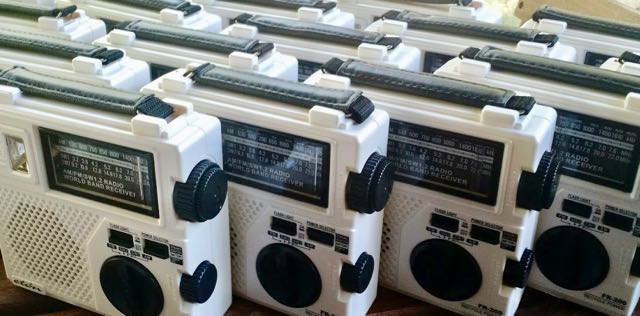There are so many reasons having a reliable radio at the ready is a good idea.
We radio geeks get it.
This morning, an item from Business Insider UK appeared in my news feed. The focus of the article was what not to do after a hypothetical nuclear detonation. Researchers discovered that the knee-jerk reaction from most would be to get in their car and drive away from the affected area as quickly as possible. Turns out, this is about the worst thing you can do because vehicles are such poor insulators from deadly nuclear fallout.
Here’s what’s recommend instead, according to Brooke Buddemeier, a health physicist and radiation expert at Lawrence Livermore National Laboratory:
“Your best shot at survival after a nuclear disaster is to get into some sort of “robust structure” as quickly as possible and stay there, Buddemeier said. He’s a fan of the mantra “go in, stay in, tune in.”
“Get inside … and get to the center of that building. If you happen to have access to below-ground areas, getting below ground is great,” he said. “Stay in 12 to 24 hours.”
The reason to wait is that levels of gamma and other radiation fall off exponentially after a nuclear blast as “hot” radioisotopes decay into more stable atoms and pose less of a danger. This slowly shrinks the dangerous fallout zone — the area where high-altitude winds have dropped fission products.
(Instead of staying put, however, a recent study also suggested that moving to a stronger shelter or basement may not be a bad idea if you had ducked into a flimsy one.)
Finally, tune in.
“Try to use whatever communication tools you have,” Buddemeier said, adding that a hand-cranked radio is a good object to keep at work and home, since emergency providers would be broadcasting instructions, tracking the fallout cloud, and identifying where any safe corridors for escape could be.”
Read the full article at Business Insider UK.
Regardless of the scenario, a preparedness kit should always include radio. Mobile phones have limited utility when the network infrastructure is disrupted or overloaded. TVs aren’t practical or portable.
Radios are a simple way of main-lining life-saving information during disasters.
But again, we radio geeks get it!


Yes MW and SW small portable Battery radios are a Must always in these conditions. With spare batteries available. The next question would be the radio broadcast frequency to tune to in this emergency.
There would have to be a national Radio broadcaster, that would have a nationally known freq. to listen to in this event . Also backup freqs. for proagation changes etc.
Disaters will allways activated AM SW stations to emergency broadcasts.
I would have thought AM is probably still best here in Australia. All the news and emergency broadcasting still happens on AM (MW), and it travels so much further than FM. Which is relevant if you are tuning into out of town broadcasts (I don’t imagine a local FM station will be on air after a nuke hits your city.). DAB is useless (I doubt it wouldn’t even cover the blast radius). SW is good for the follow up info and outside opinions, but unfortunately in Australia our national SW broadcaster is gone. But we can still get RNZI!
ITU recomend an FM radio into your Iphone or simular. I think you really needs a wind-up radio with all analoug bands AM SW FM instead. What do you reader think about that ???
Not many mobile phones have FM radios anymore (certainly not iPhones) but it’s good to have it. I’m a bit annoyed that the phone I currently use doesn’t have it (but it has two SIM-card slots, the best mobile camera and screen so I can live with it for now).
For a standalone radio I’m not so sure wind-up radios are that great for people that almost never use them because the Ni-MH battery may be dead when you actually need it.
Having one or more AA-powered radios and plenty of AA batteries make more sense to me (or AAA or D whichever you have available batteries for).
For me personally if it’s more than a simple FM radio I want proper longwave support…
You can hear recordings from 1961 that would have aired on WCCO-AM (Minneapolis/St. Paul, MN) in the event of a probable or actual enemy attack, plus an announcement from Minnesota’s governor that would have aired afterwards at the following link. Plus, a recording of announcements on WCCO from 1971 when an actual Emergency Broadcast System notification was mistakenly sent out. Scroll down slightly for these recordings.
Here is the website:
http://radiotapes.com/specialpostings.html